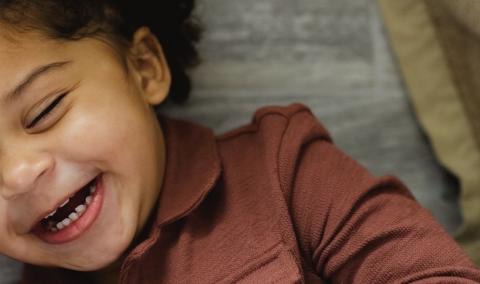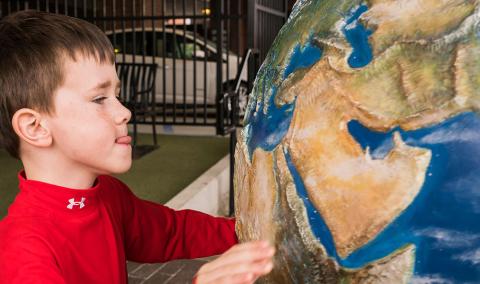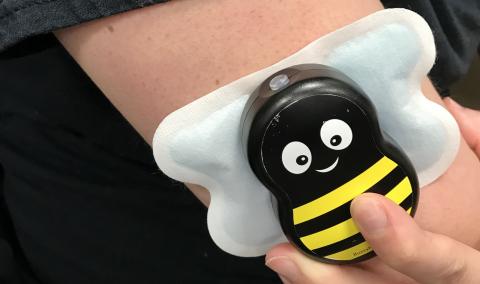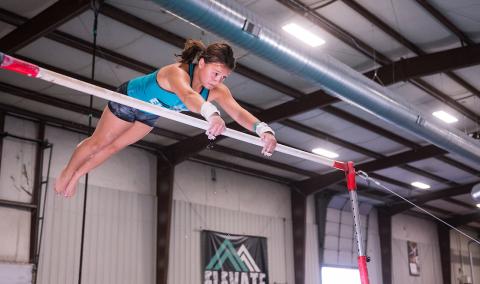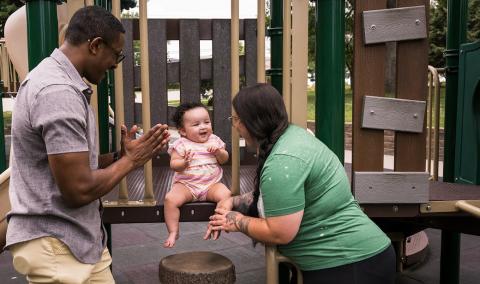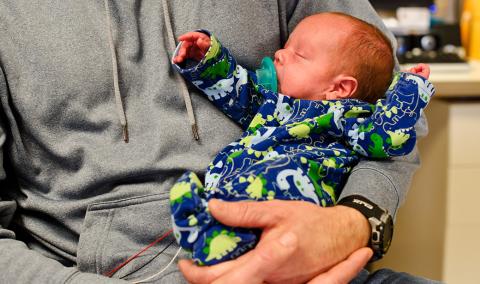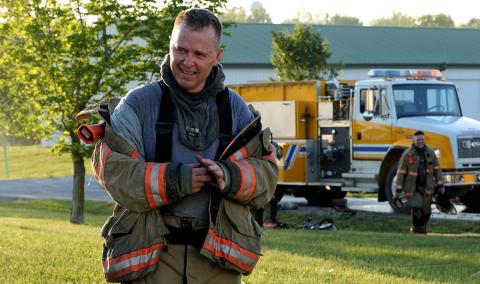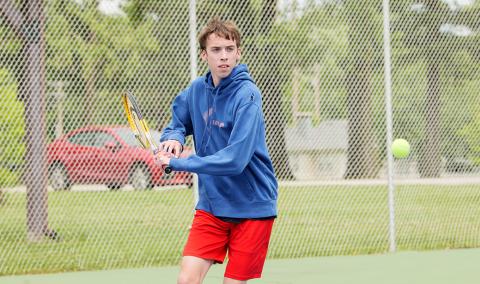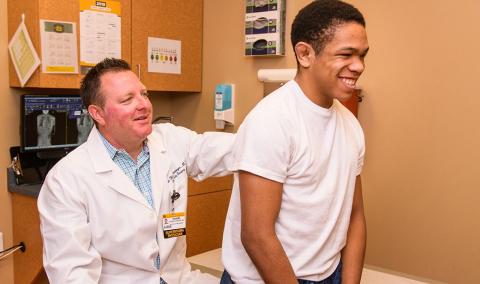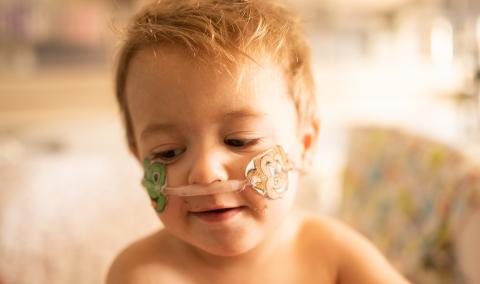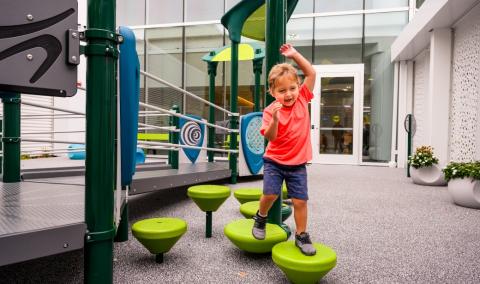Treacher Collins syndrome is a condition that affects your child’s lower eyelids, cheekbones, and the soft tissues of the cheek, ear and lower jaw (mandible).
When your child has Treacher Collins syndrome, you can trust the experienced Children's Health specialists at Children’s Hospital to answer questions you may have and work with your child and family through every step of the treatment process.
Treatment for children with Treacher Collins syndrome
At MU Health Care, we treat your child with a personalized treatment plan. If the lower jaw is not severely underdeveloped, your child’s reconstruction usually begins with the cheekbones. Our surgeons reconstruct the cheekbones (zygomas) with bone grafts taken from your child’s own skull (no defects are left in the skull). Soft tissue reconstruction of the lower eyelids and cheek is usually done after the reconstruction of the cheekbones.
If the lower jaw (mandible) is extremely small, especially if it is causing your child breathing difficulty, our team treats the mandible first. In such severe cases, the mandible is treated early in life with either a bone graft or distraction osteogenesis, a technique of elongating the mandible by slowly stretching it using a special device.
If your child’s mandible is not so severely affected, treatment can be delayed until after we complete the cheekbone reconstruction. Again, our team may use either a bone graft or distraction osteogenesis. In the least severe cases, we treat the mandible in adolescence, with surgical repositioning of the upper and lower jaws in one stage.
Whether or not your child will need other surgeries depends on his or her unique condition and situation. Our team may perform ear reconstruction before or after mandible reconstruction, depending on the severity of the mandibular deformity. These children require final jaw alignment surgery in adolescence, regardless of whether they have had a jaw reconstructive procedure earlier in life. Finally, in the most severe cases with a very small lower jaw, we may have to place a temporary tracheostomy (a surgical airway) early in life so that your child can breathe comfortably.
Frequently asked questions about Treacher Collins syndrome
Check out the answers to commonly asked questions about this condition.
What is Treacher Collins syndrome?
With Treacher Collins syndrome, both sides of your child’s face are affected, usually equally. It causes a lack of soft tissue in the lower eyelid and cheek, and the cheekbones are quite underdeveloped. The eyes also slope downward. The ears may be small, malformed or absent (microtia). Your child’s lower jaw is also underdeveloped, resulting in a large “overbite” and the appearance of a “weak chin.”
Is this condition painful?
No, this condition doesn’t cause your child any pain.
Are there different types of Treacher Collins syndrome?
There is a spectrum of severity with Treacher Collins syndrome. Some children may have only subtle abnormalities that are never treated, while others may have very severe deformities that require multiple operations to correct.
Who gets Treacher Collins syndrome?
Treacher Collins syndrome is inherited in an autosomal dominant fashion. That means that the children of a person affected with the syndrome have a 50 percent chance of having the syndrome also. Some cases may arise sporadically, meaning the child’s parents do not seem to be affected. However, the syndrome can be manifested in very different ways in different individuals, so very mildly affected parents may have very severely affected children, or vice-versa.
What are the main issues related to Treacher Collins syndrome?
Children with Treacher Collins syndrome have three major symptoms:
- A small lower jaw with an abnormal relationship of the upper and lower teeth
- Inadequate bone support of the cheek, eye sockets and lower eyelids
- Poor and inadequate soft tissue in the lower eyelids and cheek
Other issues may include:
- Abnormally large mouth (macrostomia)
- Difficulty breathing
- Hearing loss
- Malformed or absent ears
What happens between the time my baby is born and the first surgery?
After the initial craniofacial team evaluation, we continue to evaluate your child periodically to ensure that he or she is growing and developing appropriately. We take a computerized tomography (CT) scan to aid in our assessment and we may repeat these scans multiple times before your child’s surgery. Your child's surgeon will meet with you several times to examine your child and to ensure that he's answered all your questions about the surgery.
What specialists will be involved in my child’s care?
The optimal treatment of children with Treacher Collins syndrome is achieved in a multidisciplinary setting, which may include a:
- Craniofacial surgeon (a plastic surgeon who has done additional specialized training)
- Developmental pediatrician
- Geneticist
- Orthodontist
- Otolaryngologist (ear, nose and throat doctor)
- Pediatric ophthalmologist
- Pediatric plastic surgery nurse
Related Conditions & Treatments
- Adolescent Medicine
- Chest Wall Deformities
- Down Syndrome
- Emergency Care for Kids
- Gastrostomy and Feeding Access Program
- Hyperbaric Oxygen Therapy
- Juvenile Diabetes
- Neonatology
- Pediatric Anesthesiology
- Pediatric Cancer
- Pectus Carinatum
- Pectus Excavatum
- Pediatric Cardiology
- Pediatric Dermatology
- Pediatric Development and Behavior
- Pediatric ENT (Ear, Nose and Throat)
- Pediatric Epilepsy
- Pediatric Eye Care
- Pediatric Gastroenterology
- Pediatric Infectious Diseases
- Pediatric Inpatient Rehabilitation
- Pediatric Nephrology
- Pediatric Neurology
- Pediatric Neurosurgery
- Pediatric Orthopaedics
- Pediatric Plastic Surgery
- Pediatric Primary Care
- Pediatric Psychiatry
- Pediatric Pulmonary Medicine
- Pediatric Sleep Medicine
- Pediatric Surgery
- Pediatric Surgical Services
- Pediatric Urology
- Pediatric Vascular Anomalies
- Pediatric Weight Management
- Sickle Cell Disease
- Aerodigestive Program




